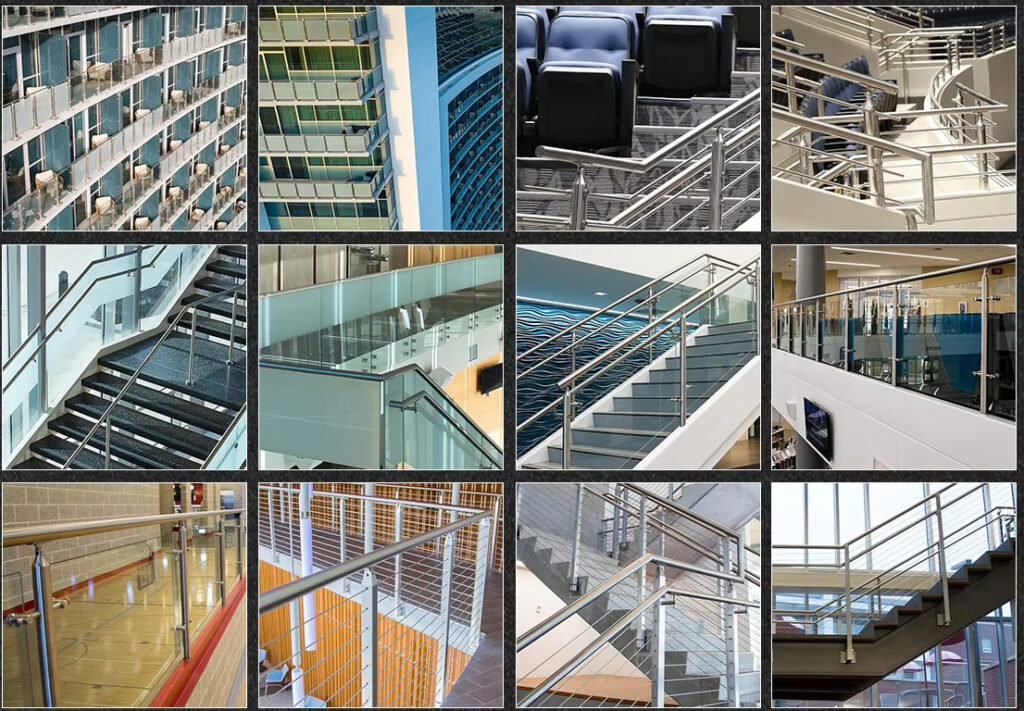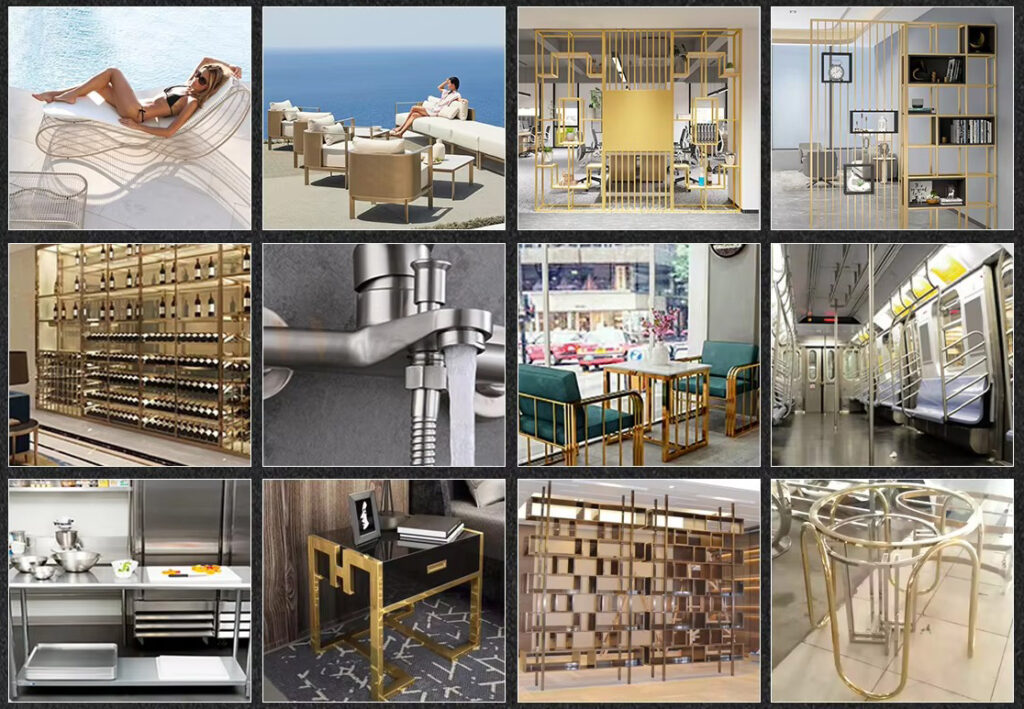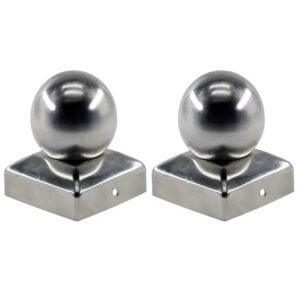
Post caps & end caps (round, square, decorative)
Post caps & end caps in 316L stainless steel. 23 years precision manufacturing for decorative applications worldwide. Request quote today.

Post caps & end caps in 316L stainless steel. 23 years precision manufacturing for decorative applications worldwide. Request quote today.
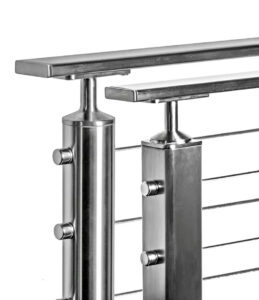
Square stainless steel posts in 304/316L grades. 23 years precision manufacturing for coastal projects worldwide. Request quote today.
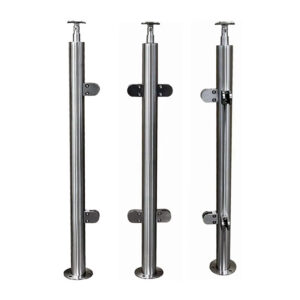
Stainless steel posts in 304/316L grades. 23+ years ODM fabrication for marine & commercial applications. Contact factory today.
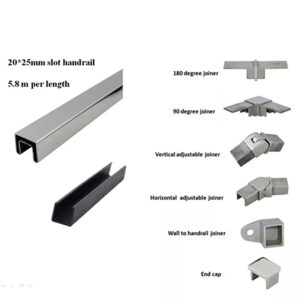
Square top rail components in 316L stainless steel. 23+ years precision manufacturing for global applications. Contact factory today.
Project-specific hardware in 316L stainless steel. 23 years delivering tailored solutions for specialized projects worldwide. Get factory quote today.
Non-standard size components in 316L stainless steel. 23+ years ODM manufacturing for unique sizing requirements globally. Contact us today.
| Specification | Our Marine-Grade Systems | Standard Coastal Products | Competitive Advantage |
|---|---|---|---|
| Material Grade | 316L Marine-Grade Stainless Steel | 304/201 Mixed Grades | Superior molybdenum content for chloride resistance |
| Salt Spray Resistance | 2000+ hours ASTM B117 tested | 500-1000 hours standard | 4x longer exposure protection validated |
| Corrosion Rate | <0.1mm/year in seawater | 0.3-0.5mm/year typical | Extended 25+ year service life |
| Tensile Strength | 580-750 MPa minimum | 450-600 MPa standard | Enhanced structural integrity under wind loads |
| Pitting Resistance | PREN >25 (316L specification) | PREN 18-22 (304 grade) | Superior resistance to localized corrosion |
| Surface Finish | Ra ≤ 0.8 microns electropolished | Ra 1.2-1.6 microns standard | Smoother surface reduces corrosion initiation |
| Temperature Range | -40°C to +200°C operational | -20°C to +120°C standard | Extended performance in extreme climates |
| UV Resistance | No degradation after 5000 hours | Surface degradation after 2000 hours | Maintains appearance in intense coastal sun |
Superior Saltwater Corrosion Resistance
Our 316L marine-grade stainless steel contains 2-3% molybdenum that forms protective barriers against chloride attack, outperforming standard 304 grade systems that suffer pitting corrosion within 5-7 years in coastal environments. Unlike aluminum railings that require anodizing and regular maintenance, our marine-grade systems maintain structural integrity for 25+ years without coating degradation.
Advanced Electropolished Surface Technology
Our electropolished surface finish (Ra ≤ 0.8 microns) removes surface contaminants and creates a smoother protective oxide layer compared to standard mill finishes. This process eliminates the micro-crevices where salt deposits accumulate, reducing maintenance requirements by 60% compared to brushed aluminum alternatives that trap salt particles.
Enhanced Structural Performance
Marine-grade 316L delivers 2-3x higher tensile strength than aluminum railings, critical for withstanding hurricane-force winds and wave impacts common in coastal installations. Our systems maintain load capacity ratings of 300-500 lbs per linear foot, unlike composite or wood systems that degrade rapidly under salt exposure and UV radiation.
Passivation Treatment Excellence
All components receive specialized passivation treatment that enhances the natural protective oxide layer, providing superior repassivation capability compared to standard stainless steel products. This treatment eliminates surface iron contamination that can initiate corrosion, ensuring long-term performance in aggressive marine environments.
Luxury Oceanfront Estates
High-end beachfront properties in Malibu, Outer Banks, and Martha’s Vineyard specify our 316L systems for infinity pool railings and oceanfront balconies, where direct salt spray exposure demands materials that maintain both structural integrity and visual appeal for decades without replacement.
Marina and Harbor Infrastructure
Commercial marinas in San Diego, Miami, and Boston utilize our marine-grade railings for pier walkways and boat slip access, where constant saltwater immersion and tidal action require systems engineered to withstand 24/7 marine exposure while meeting ADA accessibility standards.
Coastal Resort and Hospitality Projects
Five-star oceanfront resorts choose our 316L systems for guest balconies and beachfront dining terraces, where high-traffic usage combined with salt air demands railings that maintain aesthetic consistency across hundreds of installations while eliminating maintenance disruptions to guest experiences.
Waterfront Residential Communities
Planned coastal developments specify our marine-grade systems for community boardwalks and residential deck railings, where homeowners association budgets require materials that eliminate the 5-year replacement cycles typical of painted steel or composite alternatives in salt environments.
Commercial Fishing and Processing Facilities
Seafood processing plants and commercial fishing ports rely on our 316L systems for elevated walkways and equipment access platforms, where fish processing chemicals combined with salt spray create aggressive corrosion conditions that destroy standard materials within months.
Coastal Transportation Infrastructure
Ferry terminals and seaside transit stations specify our marine-grade railings for passenger safety barriers and platform edges, where public safety regulations require certified load ratings while salt air and weather exposure demand 20+ year service life without structural degradation.
Q1: Why is 316L stainless steel essential for coastal applications versus 304 grade?
A: 316L contains 2-3% molybdenum that provides superior resistance to chloride-induced pitting corrosion common in saltwater environments. While 304 grade may last 5-7 years in coastal settings, 316L maintains structural integrity for 25+ years, making the initial cost premium recoverable through eliminated replacement expenses.
Q2: How do stainless steel marine railings compare to aluminum for coastal homes?
A: Stainless steel offers 2-3x higher tensile strength and superior corrosion resistance without requiring anodizing treatments. While aluminum is lighter and less expensive initially, marine-grade stainless steel eliminates the periodic re-anodizing and replacement costs that aluminum systems require in aggressive salt environments.
Q3: What maintenance is required for marine-grade stainless steel railings?
A: Quarterly freshwater rinse and annual passivation treatment maintain optimal performance in direct salt exposure. Unlike painted or composite systems requiring complete refinishing every 3-5 years, marine-grade stainless steel needs only periodic cleaning to maintain both appearance and corrosion protection.
Q4: Can the same railing system be used for both oceanfront and inland applications?
A: While 316L marine-grade performs excellently in all environments, inland applications can use more cost-effective 304 grade. However, properties within 1 mile of saltwater should use 316L grade to ensure long-term durability, as salt spray can travel significant distances inland depending on wind patterns.
Q5: How do I verify that railing systems meet marine environment standards?
A: Look for ASTM B117 salt spray testing certification showing 2000+ hour performance and material certificates confirming 316L composition including molybdenum content. Our systems include complete traceability documentation and independent laboratory testing reports validating marine environment performance.
Q6: What installation considerations are unique to coastal environments?
A: Coastal installations require enhanced anchoring systems to resist wind uplift loads and specialized gaskets to prevent salt water intrusion into mounting points. Proper drainage design prevents salt accumulation, while galvanic isolation prevents corrosion between dissimilar metals common in coastal construction.
Q7: How long should marine-grade stainless steel railings last in direct salt exposure?
A: Properly installed 316L systems typically provide 25-30 years of service life in direct oceanfront applications. This compares to 5-10 years for aluminum systems, 3-5 years for painted steel, and 2-3 years for composite materials in similar salt exposure conditions.
Q8: Can existing aluminum or steel railings be upgraded to marine-grade stainless steel?
A: Yes, our modular design allows retrofitting of existing mounting points in most cases. However, complete system replacement is often more cost-effective than piecemeal upgrades, especially when existing systems show corrosion damage that may have compromised structural mounting points.
Q9: What warranty coverage applies to marine environment installations?
A: Our 25-year structural warranty covers material defects and corrosion failure in marine environments, provided proper installation and maintenance protocols are followed. This warranty reflects our confidence in 316L material performance based on decades of coastal installation experience.
Q10: How do building codes affect marine railing installations?
A: Coastal building codes often require enhanced wind load ratings and corrosion-resistant materials due to hurricane exposure and salt air. Our systems exceed IBC structural requirements while meeting specialized coastal zone regulations that may restrict certain materials or require specific certifications.
Marine Environment Standards Compliance
Our marine-grade systems conform to ASTM A240 standards for 316L stainless steel composition, ensuring minimum 2% molybdenum content critical for chloride resistance. Additional compliance includes ASTM B117 salt spray testing with validated 2000+ hour performance, exceeding standard coastal environment requirements by 4x margin.
Corrosion Testing Certifications
Independent laboratory testing validates PREN (Pitting Resistance Equivalent Number) >25 for all 316L components, confirming superior localized corrosion resistance compared to 304 grade materials (PREN 18-22). Electrochemical testing demonstrates repassivation capability essential for long-term marine performance.
International Marine Standards
Products meet North American, European, and Australian marine standards including ASTM, EN, and AS/NZS specifications for structural performance in aggressive environments. CE marking confirms European safety standards, while additional certifications support global coastal project requirements.
Material Traceability Systems
Complete mill test certificate documentation tracks 316L composition from steel production through final installation, including verification of molybdenum content, nitrogen levels, and mechanical properties. Heat lot traceability supports quality control and enables performance tracking across marine installations.
Environmental Performance Validation
Long-term exposure testing in actual marine environments validates laboratory performance predictions, with installation monitoring documenting corrosion rates, structural integrity, and appearance retention over multi-decade service periods. This real-world data supports warranty coverage and specification confidence.
Specialized Installation Protocols
Marine installation guidelines address galvanic compatibility, drainage design, and wind load calculations specific to coastal environments. Technical support includes structural analysis for hurricane wind zones and coordination with coastal engineering requirements for erosion protection and flood resistance.

